DP Janusz Kamiński ASC conjures up the razzle dazzle for Steven Spielberg's 'West Side Story' using KODAK 35mm film
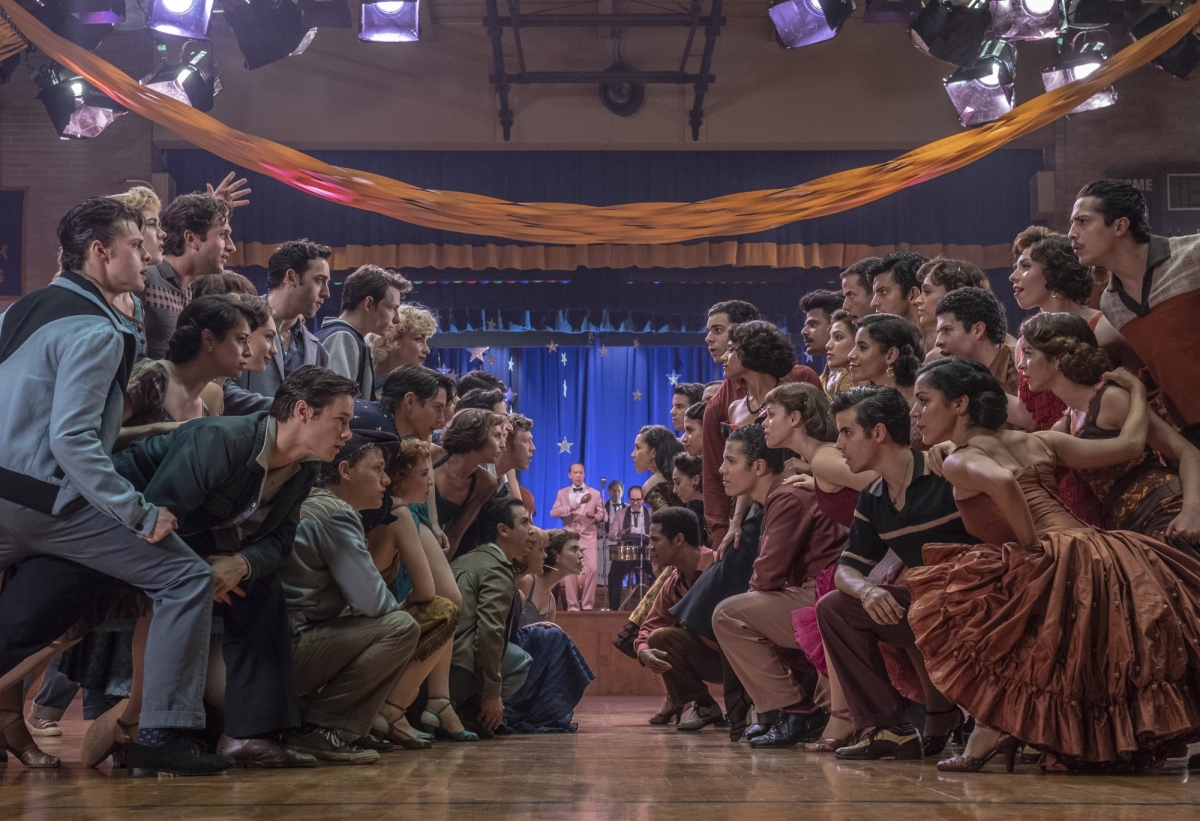
Scene from 20th Century Studios' WEST SIDE STORY. Photo by Niko Tavernise. © 2020 Twentieth Century Fox Film Corporation. All Rights Reserved.
The trouble with remaking classic, much-loved movies is that they simply might not live up to expectations. But Steven Spielberg’s vivid re-imagining of the iconic West Side Story seems to have defied that sort of outcome. And then some.
Critics have hailed the new movie as a sensation, one of the very best from the celebrated filmmaker and his collaborators, largely for its enterprising fusion of colorful Hollywood musical entertainment with today’s social sensibilities; a movie that is in harmony with its origins while being attuned to contemporary issues.
Directed and co-produced by Spielberg from a screenplay by Tony Kushner and shot on KODAK 35mm film by the director’s longtime cinematographer Janusz Kamiński ASC, West Side Story is the second feature-length adaptation of the 1957 Broadway stage musical of the same name, conceived by Jerome Robbins, with music by Leonard Bernstein and lyrics by Stephen Sondheim.
The 1961 feature production of West Side Story (dirs. Robert Wise/Jerome Robbins, DP Daniel L. Fapp ASC) is regarded as one of the greatest musical films of all time and won ten Academy Awards. Now, along with critical acclaim, Spielberg’s version was named one of the top ten films of 2021 by both the National Board of Review and the American Film Institute. It also received four nominations at the 79th Golden Globe Awards, winning three, including Best Picture - Musical/Comedy, and looks well-placed to receive many more nominations and accolades in the 2022 awards season.
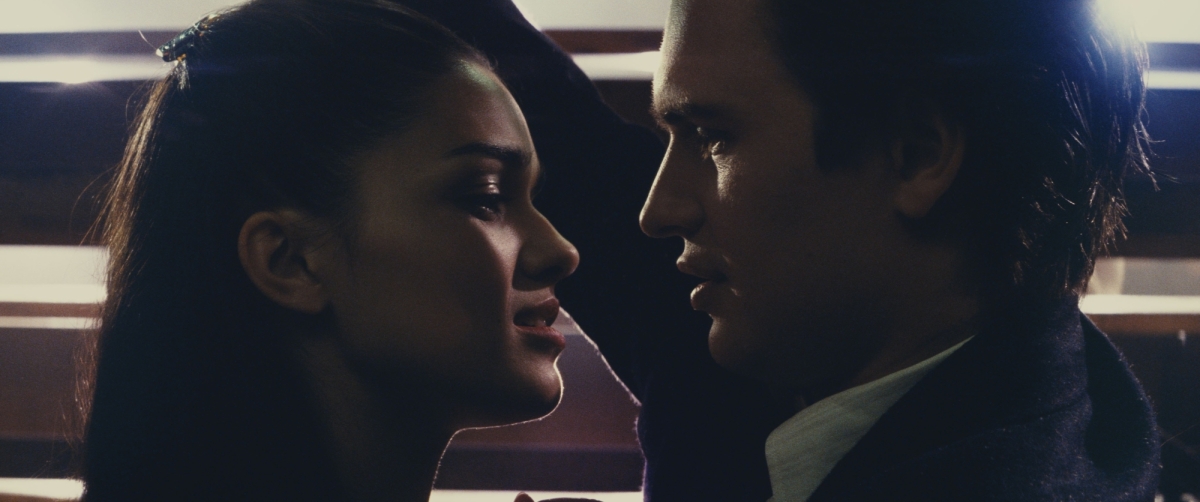
Rachel Zegler as Maria and Ansel Elgort as Tony in 20th Century Studios' WEST SIDE STORY. Photo courtesy of 20th Century Studios. © 2021 20th Century Studios. All Rights Reserved.
For those who are unfamiliar with the narrative, West Side Story is inspired by William Shakespeare's tragedy Romeo and Juliet. It takes place during the mid-1950s in the Upper West Side of Manhattan in New York City, then a multi-racial, blue-collar neighborhood. The story, set to Bernstein and Sondheim’s original songs, explores the rivalry between the Jets and the Sharks, two teenage street gangs of different ethnic backgrounds. The members of the Sharks, from Puerto Rico, are taunted by the Jets, a white gang. Tensions between the two crews rise when Tony, a former member of the Jets and the best friend of the gang's leader, Riff, falls in love with Maria, the sister of Bernardo, the leader of the Sharks, and the feuding soon escalate into an all-out, deadly rumble between the adversarial gangs.
Spielberg’s West Side Story stars Ansel Elgort as Tony, and newcomer Rachel Zegler as Maria, with Ariana DeBose, David Alvarez, Mike Faist, and Rita Moreno in supporting roles. Moreno, who starred in the 1961 film adaptation, also served as an executive producer.
West Side Story represents Kamiński’s 18th consecutive feature film with Spielberg, over a span of 25 years, all but one of them (The BFG, 2016) shot using celluloid film. Kamiński earned Best Cinematography Oscars® for Schindler’s List (1993), his first title with the director, and Saving Private Ryan (1998), as well as six Academy nominations for his other films with Spielberg.
“Steven and I still use celluloid to make movies, as film emulsion has an incredible aesthetic ability to evoke nostalgia,” remarks Kamiński. “Additionally, the rhythm of the ‘take, cut and reload’ process is a familiar ritual, and we see no reason to work in any other way.”
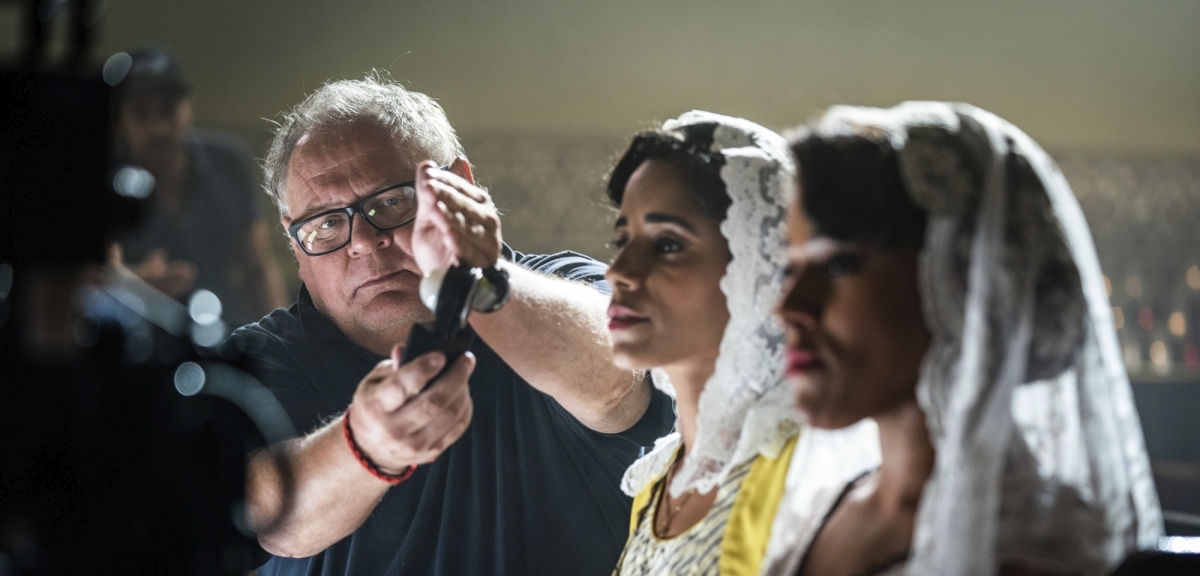
Cinematographer Janusz Kamiński ASC, Ilda Mason as Luz, and Ariana DeBose as Anita behind the scenes of 20th Century Studios' WEST SIDE STORY. Photo by Niko Tavernise. © 20th Century Studios. All Rights Reserved.
In conjuring up the looks for the film, Kamiński says, “I have seen the original 1961 film many times over the years, and I really like it, especially for its period glamour. But I did not really study it in any depth, and things were different aesthetically, psychologically, philosophically, and technically back then.
“I also remember being blown away by musicals like Singin’ in the Rain (1952, dirs. Gene Kelly/Stanley Donen, DP Harold Rosson ASC]), La Cage aux Folles (1978, dir. Édouard Molinaro, DP Armando Nannuzzi AIC), and Chicago (2002, dir. Rob Marshall. DP Dion Beebe ACS ASC), but other than the impressions they made on me, filmic references were irrelevant.
“Steven and I were more inspired by the razzle dazzle of Broadway musicals than anything else – where things look glamorous, the people look spectacularly beautiful, the action is full of color, energy and panache, while also being gritty and dramatic when appropriate.
“So, in finding the look of the film, I was more intrigued with contemporary photography of New York back in the 1950s and ‘60s, that the production designer Adam Stockhausen had compiled. I was especially interested in the colorful depiction of daily life in Puerto Rican and Dominican neighborhoods, which were nice, close-knit communities.
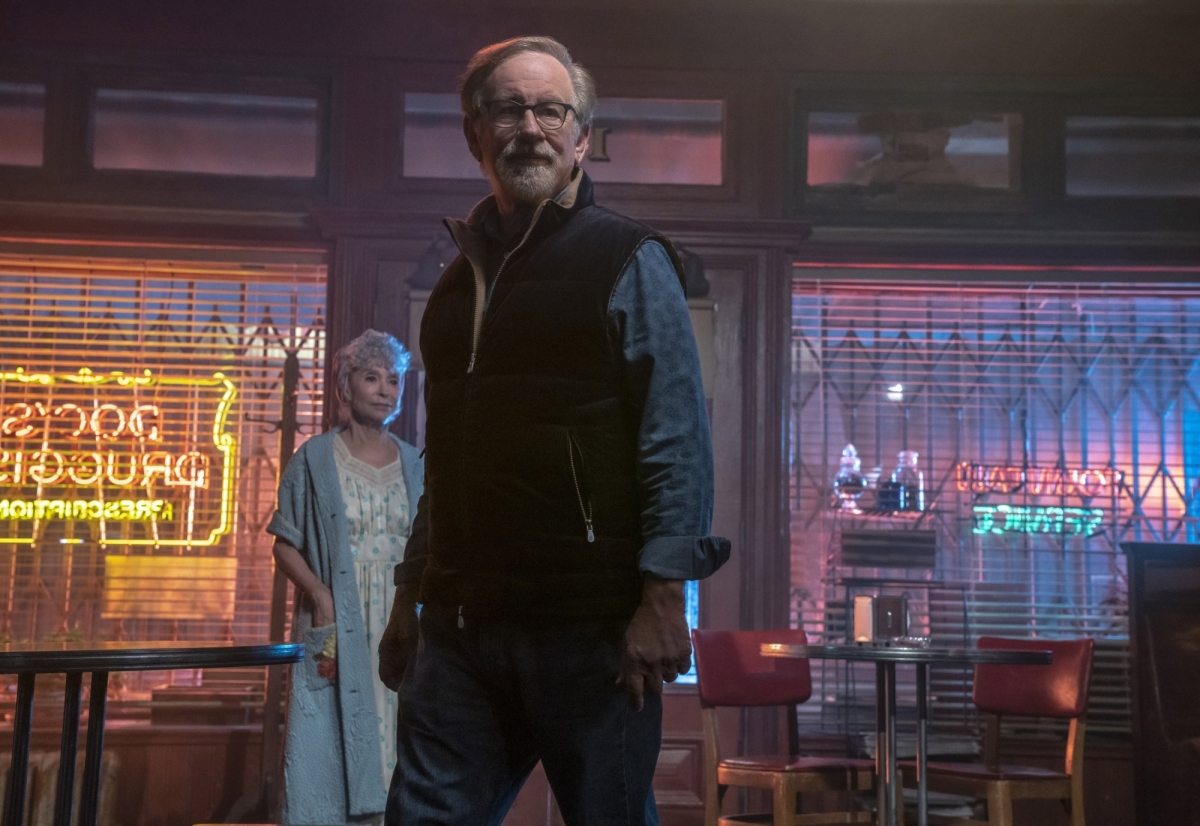
Director Steven Spielberg and Rita Moreno as Valentina on the set of 20th Century Studios' WEST SIDE STORY. Photo by Niko Tavernise. © 20th Century Studios. All Rights Reserved.
“Yes, New York life had a tough underbelly, that you can see in movies like Midnight Cowboy (1969, dir. John Schlesinger, DP Adam Holender), The Panic in Needle Park (1971, dir. Jerry Schatzberg, DP Adam Holender) and Taxi Driver (1976, dir. Martin Scorsese, DP Michael Chapman ASC), but we thought this sort of depiction would give a false, grim perspective to the storytelling.”
Filming took place over the course of 79 days, from July 2019 to the end of September that year. Production was mainly location-based, encompassing Harlem in Upper Manhattan, Flatlands in the borough of Brooklyn, and Paterson, New Jersey, where an outdoor set was also built. Filming also took place in Newark and other parts of Essex County, New Jersey, with interior sets constructed at Steiner Studios.
Prior to commencing principal photography, Kamiński had ten weeks of prep, during which the capture of the dance routines were among the key creative deliberations – such as the show-stopping routine for ‘America,’ which Spielberg and choreographer Justin Pack transposed away from rooftops, as depicted in the 1961 film, and onto the city streets.
“The dance sequences were intrinsically important to the film, and you need to shoot coverage, but filming coverage in a traditional way does not apply in dance routines,” says Kamiński. “You must go with the rhythm of the song, the tempo of the dance, the story beats and sometimes several different locations. You simply can’t have a regular three or four-camera setup. Things have to be much more precise.
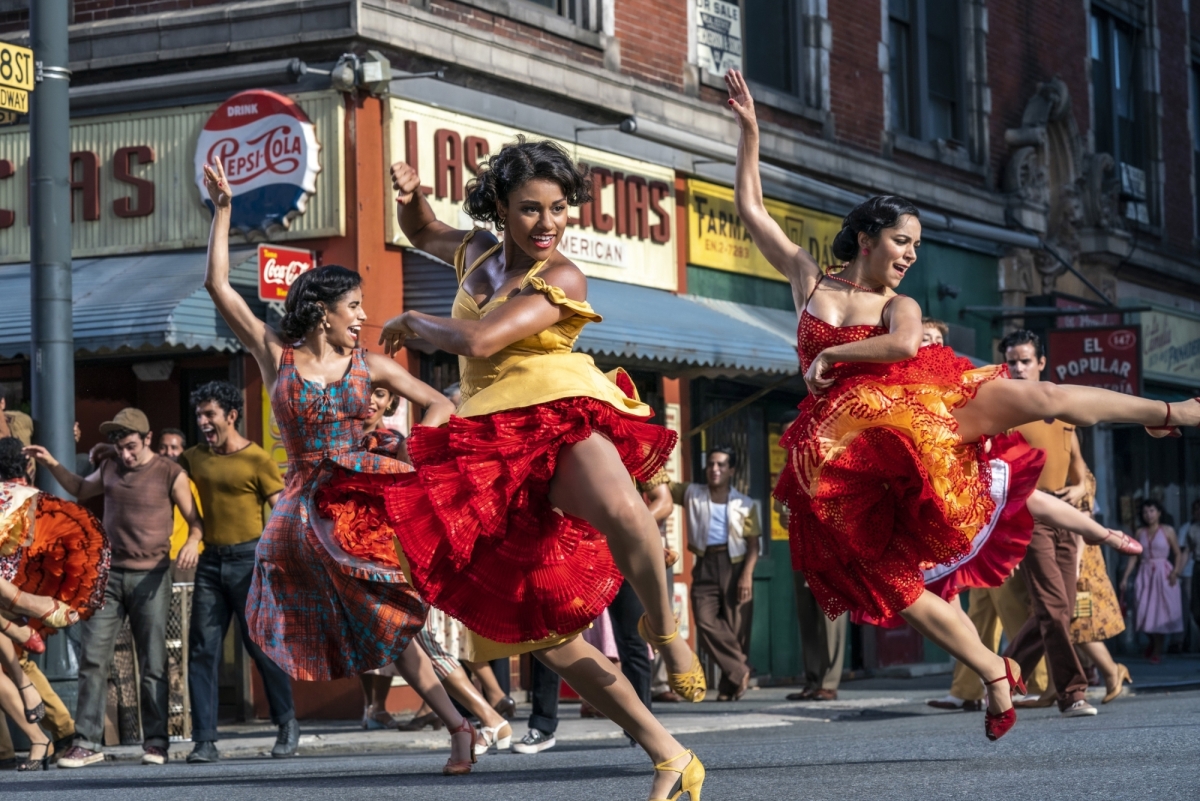
Ariana DeBose as Anita in 20th Century Studios' WEST SIDE STORY. Photo by Niko Tavernise. © 20th Century Studios. All Rights Reserved.
“Being part of the dance rehearsal process, we quickly realized that the dancers – many of whom have been stage professionals for 10 or 15 years - are really precise, even more so than stunt people, in their coordination and performances. Their exactness meant we could gracefully move in and around them, and not be in danger of us crashing or bumping into them, or vice versa.
“When we got on set, where there were things like curbs, pavements and fire hydrants to contend with, and we needed to change a camera position or movement, Justin, the choreographer, worked with the dancers to quickly adapt and accommodate their routine to meet our requests. This was very comforting and is a great example of the collaboration between different departments.”
The routine for ‘America’ was shot over ten days at locations across Harlem, Queens and Paterson, where fable has it that Ariana DeBose's dance shoes melted and had to be replaced multiple times due to a combination of hot weather and the intensity of the choreography. Of course, shooting one set-piece over such a protracted period of time, meant Kamiński and his crew having to protect the light for consistency and continuity during days that fluctuated between overcast and sunny conditions. But he says, “that’s one of the jobs you are hired for as a cinematographer. That’s what we do.”
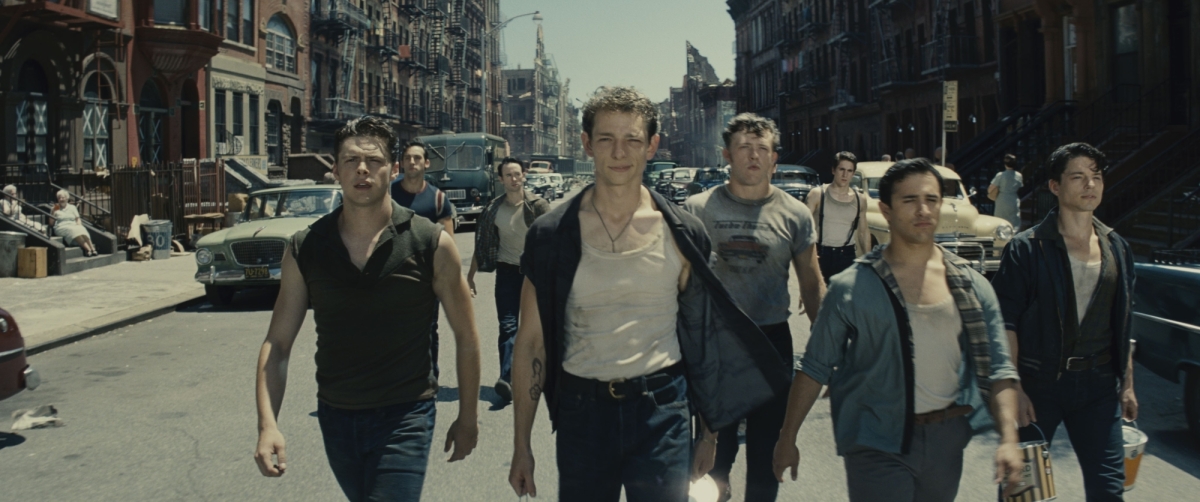
Mike Faist as Riff in 20th Century Studios' WEST SIDE STORY. Photo courtesy of 20th Century Studios. All Rights Reserved.
After extensive testing, Kamiński went with Panavision Millennium XL2 35mm cameras, shooting in widescreen 2.39:1 aspect ratio, using Panavision C-series Anamorphic lenses, supplemented by T-series Anamorphics whose contrast ratios were streamlined to match the C-series, while also being optimized for close-focus and performance in low-light situations by lens guru Dan Sasaki.
“Shooting widescreen was a natural choice,” Kamiński explains. “This was a classic Hollywood musical, with many shots involving groups of people, and we wanted to try to keep as many dancers in the picture as possible. So, we really needed that width of the frame.
“When it comes to lenses, Dan is a great asset to Panavision. He is very knowledgeable and gave me a fascinating tutorial about Anamorphic lenses and how they evolved over time during the 1930s, ‘40s, ‘50s and ‘60s. At my request, he tweaked and adapted a couple of lenses so they would exhibit increased propensity to flare.
“I purposely wanted to encourage flaring in the visual vocabulary of this movie. Flares can look pretty and add lyricism to a dreamy romantic sequence, such as Tony and Maria’s first kiss. But they can also add to the expressionist sense of intimidation and danger, as in the night-time rumble between the Jets and Sharks.”
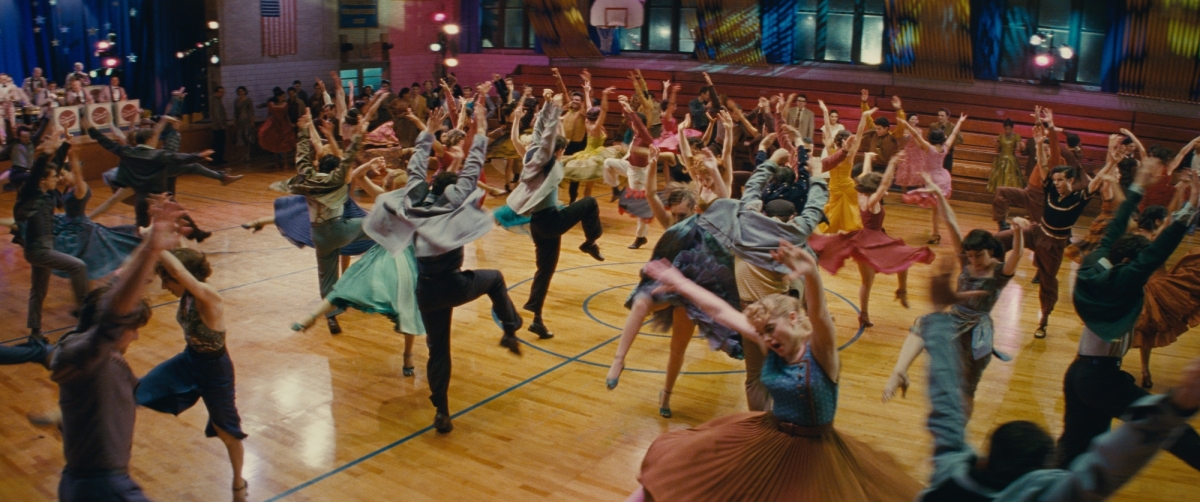
Scene from 20th Century Studios' WEST SIDE STORY, directed by Steven Spielberg. Photo courtesy of 20th Century Studios. © 2021 20th Century Studios. All Rights Reserved.
Kamiński also says, “When I shot Bridge of Spies (2015), I used Hawk Anamorphics, as I liked their aberrations and the way the image fell apart at the edge of the frame. But that was not appropriate here. You can shoot with wider lenses C- and T-series without the same level of distortion.
“I also wanted to shoot at a high T-stop, between T8 and T11, as I do not like shallow depth-of-field and did not want the performers moving in and out of focus. You can work with the Panavision Anamorphics at these T-stops, but they required a lot of light. Consequently, our night scenes and larger interiors, such as the dance at the gymnasium when Tony and Maria meet, needed some pretty big lighting rigs.”
Kamiński went with KODAK VISION3 500T Color Negative Film 5219 for all of the night exterior scenes, using the texture of its inherent grain to reflect the reality of the seedier locations and edgy moments. Most of the apartment scenes were shot using KODAK VISION3 200T Color Negative Film 5213, with the emphasis on keeping the look warm and beautiful. KODAK VISION3 50D Color Negative Film 5203 was used for most of the day exteriors, bringing vivid color to the dance routines, switching to KODAK VISION3 250D Color Negative Film 5207 if shoots extended beyond normal daylight. Film processing was completed at KODAK Film Lab in New York, with dailies scanning and the final DI grade done at Technicolor, NY, now Streamland Media.
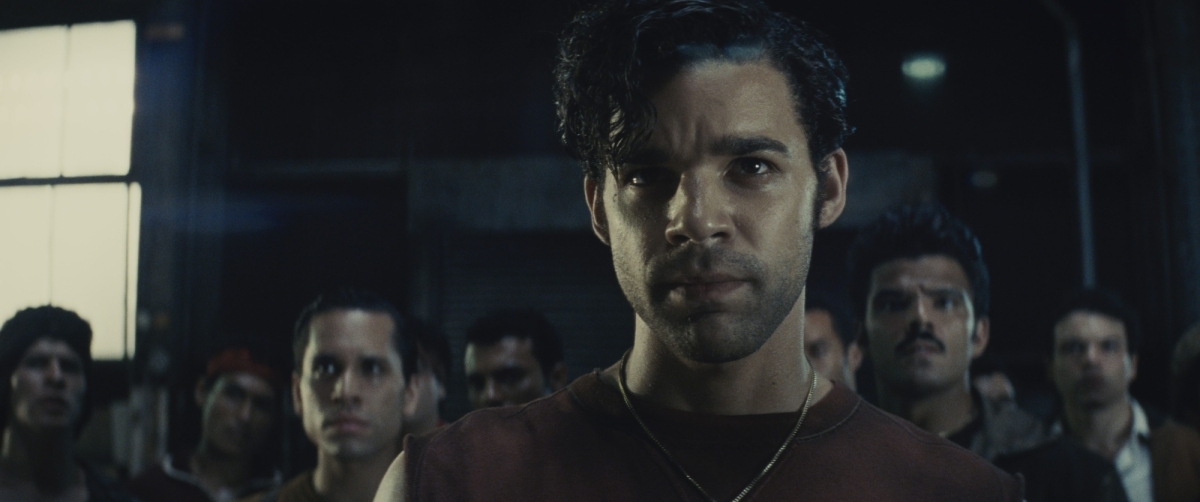
David Alvarez as Bernardo Vasquez in 20th Century Studios' WEST SIDE STORY. Photo courtesy of 20th Century Studios. © 2021 20th Century Studios. All Rights Reserved.
“While I know KODAK’s 200T and 500T filmstocks match well, you can also use them to create different aesthetics,” Kamiński remarks. “I used a lot of Tungsten lights on this film and corrected in-camera with an 85 filter when shooting with the Tungsten emulsions. The finer-grain structure of the 200T was ideal for my purposes of creating a welcoming, homely atmosphere on the interiors, while the 500T is naturally more light-sensitive, with bigger grain and more texture, and was more appropriate to depict the harsher, grittier moments in the movie.
“I have always liked a bit of grain and find that I am more emotionally-involved when I see images shot on film. There’s a certain artificiality to high-definition pictures and, no matter how you cut it, film just looks more natural. Whatever story you are telling, film is still the best, and I will keep on shooting it as long as it’s manufactured and as long as it can be developed.”
Kamiński reports that he enjoyed great collaborative relationships with his crew. “I had an absolutely top-notch team, most of them having decades of experience individually, which means they are great professionals on whom you can rely. Having worked with many of them before, they know how Steven and I make movies, which made things a bit easier and a little bit faster.
“Although West Side Story was mainly a singe-camera shoot, it’s a big ship to steer, so I did not operate. I had Mitch Dubin on A-camera, assisted by Mark Spath on focus, both of whom I have worked with regularly for over 25 years. When we needed Steadicam we secured the talents of John S. Moyer, who is tall and strong, and was a dancer when he was younger, so he really understood the visual requirement and was able to move around really beautifully with the dancers and follow the action. In charge of lighting was the great New York gaffer Steve Ramsey, with whom I have made several films and many commercials, and who made sure I had plenty of beautiful, poetic light to shoot between T8 and T11. And my key grip was Mitch Lillian, a regular collaborator with Sir Roger Deakins CBS BSC ASC.
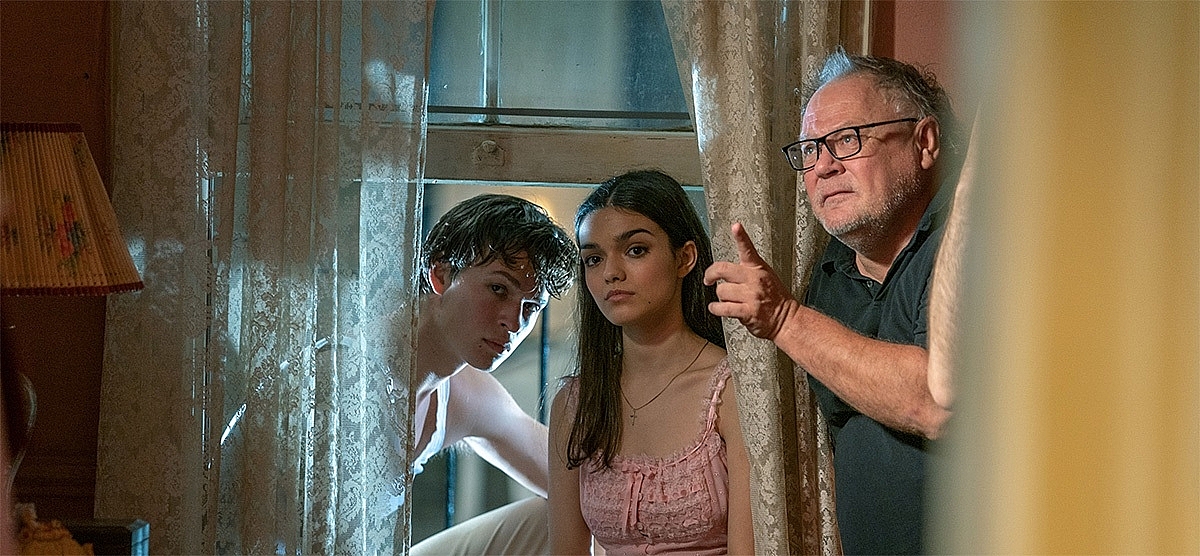
Ansel Elgort as Tony, Rachel Zegler as Maria, and cinematographer Janusz Kamiński ASC on the set of 20th Century Studios' WEST SIDE STORY. Photo by Niko Tavernise. © 20th Century Studios. All Rights Reserved.
“I also have to mention two people who have helped with the color on my last half dozen movies: John Vladic, my dailies color timer who spent time on set, supervised the neg scanning and did correction for me every evening; and colorist Mike Hatzer who did a great job of matching John’s dailies in the final grade, enhancing the monochromatic grittiness of our more edgy scenes, and finessing the inviting color of the New York neighborhoods.”
Regarding camera movement, Kamiński says, “The technology has moved on a lot since 1961 when the camera was pretty static. We wanted to bring a modern, active energy to the way the camera moved, so we employed an array of ways of moving the camera.
“For example, the prologue sequence, in which the tenement slums are being destroyed by wrecking balls ready for the construction of the Lincoln Center, was an invisible blend of separate Technocane, drone and cable-cam shots. We shot the gang walk-and-talks from the crane or Steadicam or the dolly. Steven said he wanted not just to see the dancing but to get inside the routines and be part of them, for which we went with lovely sweeping moves with the Steadicam.”
When asked about his working relationship with Spielberg on the movie, Kamiński concludes, “Neither of us had ever shot a musical before, but it was a lot of fun to do. Steven brings out the best of you in every respect – not just in terms of your work, but how you carry yourself – to be proud, but also be respectful and tolerant to other people. Making a movie about the lack of tolerance and the tensions that come with that, it was more important than ever for Steven to embrace everyone and to make them feel even more part of the movie.”